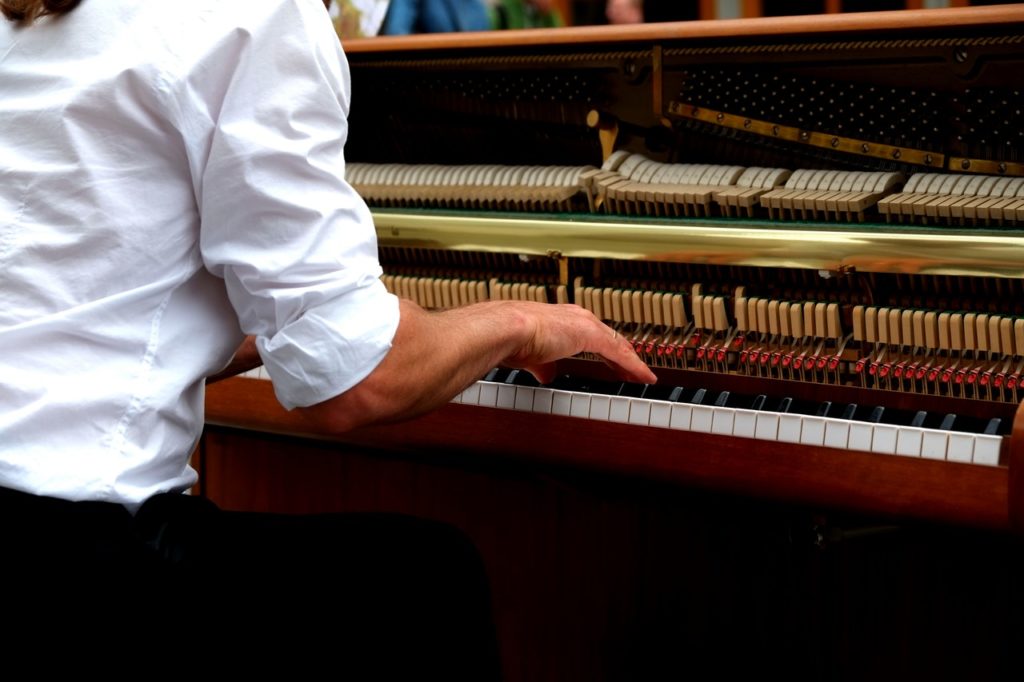
I learned this today. The piano is only 300 years old and many famous composers that we know composed for the harpsichord, not the piano.
The piano was invented by Bartolomeo Cristofori in about 1698. He worked for the house of Medici. He called his invention, “un cimbalo di cipresso di piano e forte,” which means “a keyboard of cypress with soft and loud.” The name was shortened to “pianoforte” and then “piano”. “Piano” means “soft” and “forte” means loud. Basically, it means a harpsichord that can be played both softly and loudly. And this is the basic reason why Cristofori had to invent the piano.
The main and most popular musical instrument at the time was the harpsichord. Both the piano and the harpsichord have a keyboard and strings but the way they operate is fundamentally different. When you press a key on a harpsichord, a plectrum plucks a string, making a sound. The player cannot change the strength of this sound. Whether you press the key softly, or hit the key hard, you will get exactly the same note. You can play great music on it, but you can’t put much feeling into the piece. You can’t use loud and quiet notes to show different emotions. Composers sometimes indicated points in the score where the musician could use gestures and body language to show the intended feeling.
The piano uses hammers to hit the strings. Because the hammers are connected to the keys, you can change the strength of the note by varying the strength with which you hit the key. The first pianos that Cristofori built had thinner strings and were much softer than pianos today.
The problem that Cristofori had to solve when he built the first piano was that the hammer must strike the string, but not stay touching it because that would dampen the sound. The hammer must rebound from the string and return to its original position without bouncing. It must be ready to be played again immediately. He came up with a system that solved all of these problems.
The action of the piano had a few small changes until, in the 1750s, Americus Backers, a Dutch harpsichord and piano builder working in England, designed the action that modern grand pianos are based upon.
When the piano was first introduced, it didn’t take on straight away and most composers continued to write music for the harpsichord. From 1750 to 1800, the piano started to become more popular and by the end of the 19th century, very few people still used the harpsichord.
In the beginning, people complained about the piano, saying that it was too difficult to play. Bach composed a lot of music for the harpsichord, and he wasn’t fond of the piano when it first come out. It took a while for him to grow to like it. Some of Beethoven’s earlier sonatas were written for both the piano and the harpsichord, but his later ones were only for the piano. He quickly realized the advantage the piano had.
The earlier pianos used leather to wrap the hammers, rather than felt. They produced a different sound to the pianos we have today. That means, when a Beethoven symphony is played now, it won’t sound quite the way it would have sounded in Beethoven’s day. Some people have tried to recreate these earlier pianos so they can capture the exact sound of the piece, the way that the composer intended.
So, the piano is nowhere as old as I had thought. It was invented about 300 years ago and was quite slow to take on. Many of the composers that we know from the 18th century composed music for the harpsichord because it was the most popular instrument. However, the harpsichord can only play one tone. It cannot be played softly or with vigor. Once people realized the wealth of feeling that could be expressed with the piano, the harpsichord fell out of favor. And this is what I learned today.
Sources
https://en.wikipedia.org/wiki/Piano
https://en.wikipedia.org/wiki/Harpsichord
https://www.yamaha.com/en/musical_instrument_guide/piano/structure/
https://www.wqxr.org/story/how-did-piano-unseated-harpsichord-keyboard-champion/
https://www.squarepianos.com/backers.html
https://www.elbphilharmonie.de/en/mediatheque/the-harpsichord/101

